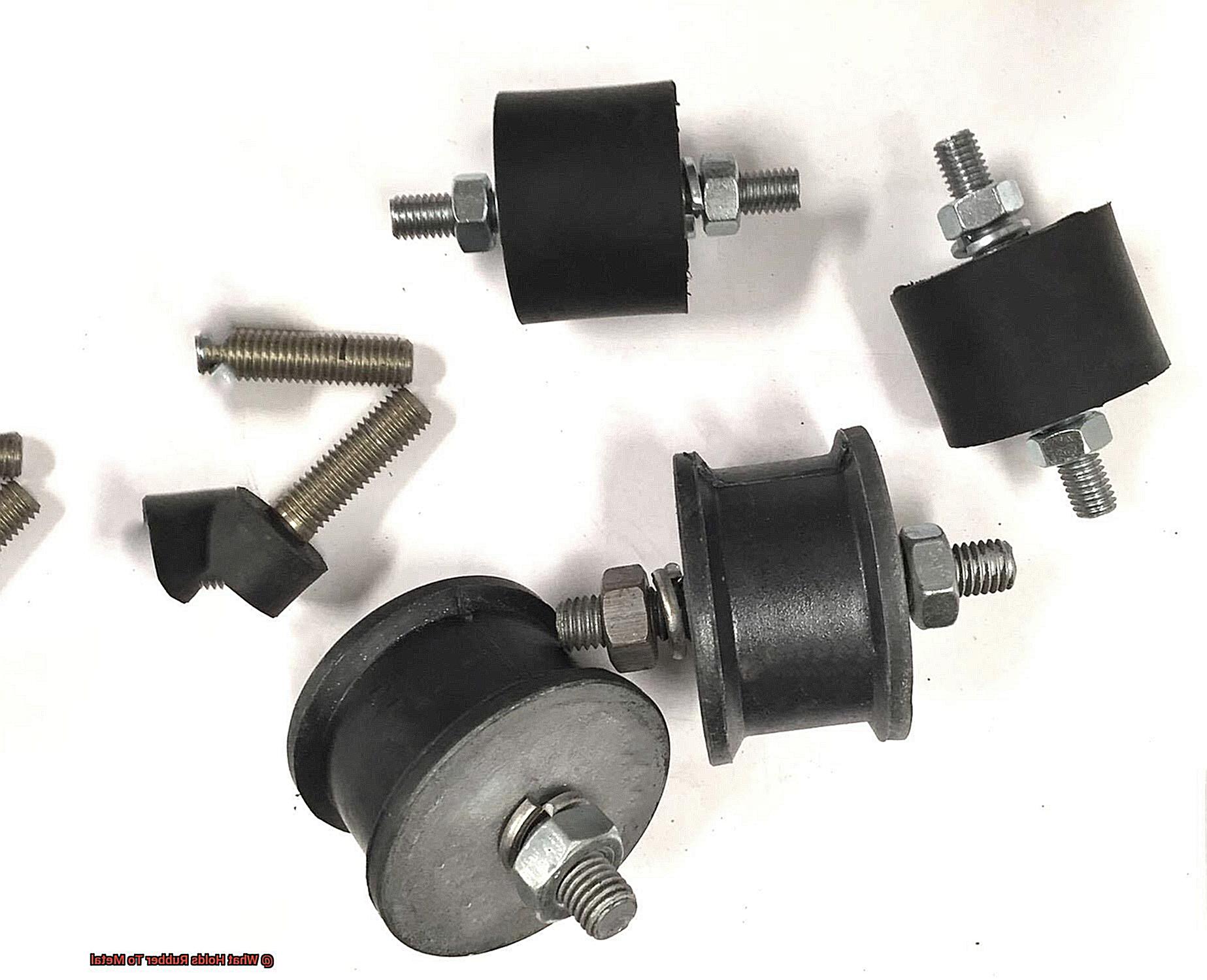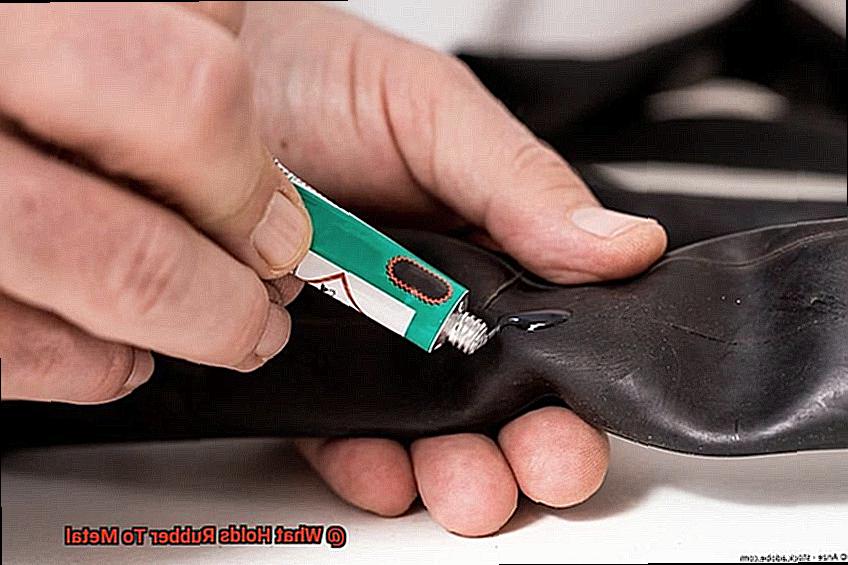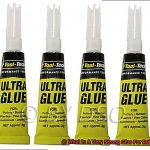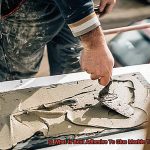Welcome to our blog post where we’ll be diving into the fascinating world of adhesion and uncovering the secrets behind what holds rubber to metal.
Rubber and metal may seem like an unlikely pair, but their unique properties make them a perfect match for many industrial applications. Have you ever wondered how they manage to stick together?
Today, we’re going to unravel this mystery and explore the magic of adhesive agents like bonding agents, adhesives, and vulcanization. Each method has its own advantages and specific applications, and we’ll be delving into all the juicy details.
So, get ready to discover what holds rubber to metal – it’s time to embark on this exciting journey.
Adhesive Bonding
Contents
Adhesive bonding is a widely used method for joining rubber to metal. It involves the use of adhesives, which are substances that allow two materials to stick together. Adhesives used for rubber-to-metal bonding are specifically formulated to provide strong and durable bonds.
Surface preparation is a crucial step in adhesive bonding. Both the rubber and metal surfaces need to be thoroughly cleaned and degreased before applying the adhesive. This ensures that there are no contaminants or barriers that could hinder the bonding process. Various cleaning methods such as solvent wiping, sandblasting, or using special cleaning agents may be employed depending on the specific materials involved.
The selection of a suitable adhesive is also essential in achieving a successful bond. Different adhesives have different properties, such as flexibility, strength, and resistance to temperature and chemicals. It is important to choose an adhesive that is compatible with both the rubber and metal substrates to achieve optimal bonding performance.
Once the adhesive is selected, it is applied to either one or both surfaces, depending on the specific requirements of the application. In some cases, a primer or bonding agent may be used to enhance the adhesion between the adhesive and the substrates. The adhesive is typically spread evenly across the surface using a brush, roller, or other suitable applicator.
After the adhesive is applied, the rubber and metal surfaces are brought together and firmly pressed against each other. This ensures proper contact between the adhesive and both substrates, allowing for effective bonding. Pressure can be applied manually or through the use of clamps, fixtures, or even specialized machinery depending on the size and complexity of the bonding area.
Curing time is another important aspect of adhesive bonding. Once the initial bonding process is completed, it is crucial to allow sufficient time for the adhesive to fully set and develop its maximum strength. Curing times can vary depending on the type of adhesive used, environmental conditions, and other factors. It is important to follow the manufacturer’s instructions regarding curing times and conditions to ensure the integrity and durability of the bond.
Natural Rubber-Based Adhesives
Natural rubber-based adhesives offer a powerful and reliable solution for bonding rubber to metal surfaces. Derived from the latex sap of rubber trees, natural rubber serves as the primary adhesive component in these formulations. Its high molecular weight and polymer chain structure give it excellent adhesive properties, forming strong intermolecular bonds with both the rubber and metal surfaces.
To achieve a successful bond, cleanliness and surface roughness are paramount. Thoroughly cleaning and degreasing the rubber and metal surfaces is essential to remove any dirt, oil, or contaminants that can hinder adhesion. Additionally, roughening the surfaces through sanding or priming increases the surface area for adhesive bonding, resulting in enhanced bond strength.
The application process involves applying the natural rubber-based adhesive to both the rubber and metal surfaces. After allowing it to partially dry or “tack off,” the surfaces are joined together. As the adhesive cures and fully dries, it forms a robust and long-lasting bond between the rubber and metal, ensuring durability in various applications.
In addition to natural rubber, these adhesives contain various additives and fillers that enhance their performance. Tackifiers improve initial adhesion, resins enhance strength and flexibility, antioxidants prevent degradation over time, and curing agents promote cross-linking of polymer chains for a stronger bond. These additives work together to provide optimal bonding capabilities.
While natural rubber-based adhesives are suitable for many rubber-to-metal bonding applications, specific requirements must be considered. Factors such as temperature resistance, chemical resistance, and load-bearing capabilities play a crucial role in selecting the appropriate adhesive. In certain cases, synthetic rubber-based adhesives or specialized bonding systems may be more suitable.
Synthetic Rubber-Based Adhesives
Synthetic rubber-based adhesives are specifically formulated to bond rubber to metal surfaces, providing a strong and durable connection. These adhesives have several properties and benefits that make them ideal for this application.
Firstly, synthetic rubber-based adhesives exhibit excellent flexibility and elasticity, similar to rubber itself. This allows them to maintain a strong bond even when the bonded parts are subjected to bending, stretching, or vibration. In applications where rubber and metal parts may experience movement or deformation, this flexibility is crucial in ensuring the adhesive remains intact.
Secondly, these adhesives offer high resistance to temperature extremes. They can withstand both high and low temperatures without losing their adhesive properties. This makes them suitable for applications exposed to varying temperature conditions, such as automotive parts or industrial equipment. Whether facing scorching heat or freezing cold, synthetic rubber-based adhesives won’t weaken or break down.
Moreover, synthetic rubber-based adhesives exhibit good chemical resistance. They can resist the effects of various chemicals, oils, and solvents. This ensures that the bond remains intact even in harsh environments where the bonded rubber and metal surfaces come into contact with different substances. The adhesive won’t deteriorate or lose its bonding strength over time.
Furthermore, these adhesives offer excellent bonding strength. They form a strong bond between rubber and metal surfaces, ensuring a reliable connection that can withstand stress and load. Whether it’s heavy loads or intense mechanical forces, synthetic rubber-based adhesives can handle it all.
To achieve optimal results when using synthetic rubber-based adhesives, proper surface preparation is essential. Both the rubber and metal surfaces should be clean, dry, and free from any contaminants that could interfere with the adhesive’s ability to bond. Additionally, it is recommended to apply the adhesive evenly on both surfaces and allow sufficient curing time for optimal bonding strength.
Epoxy-Based Adhesives
Epoxy-based adhesives, renowned for their exceptional adhesion properties and durability, are the go-to choice when it comes to bonding rubber to metal. Now, let’s dive into the intricacies of this process and explore each step in vivid detail:
First and foremost, surface preparation sets the stage for a successful bond. Imagine meticulously cleaning and drying both the rubber and metal surfaces, ensuring not even a trace of contaminants or oils remain. It’s as if you’re purifying these materials to create the perfect canvas for the adhesive to work its magic. And don’t forget about roughening those surfaces ever so slightly—a gentle sanding or wire brushing—to unleash the adhesive’s grip potential.
Once you’ve laid the groundwork, it’s time to mix the components. Picture yourself expertly combining the resin and hardener, like a chemist concocting a potent elixir. Adhering to the manufacturer’s instructions, you skillfully blend these elements in precise ratios, awakening the adhesive’s latent power.
With your mixture ready, you gracefully apply the adhesive onto one or both surfaces. Perhaps you envision yourself as an artist with a brush, or maybe a chef carefully spreading icing on a cake—whatever image speaks to you, ensuring an even layer of adhesive coats the surface(s) is paramount. You strive for perfection, aiming to achieve uniform coverage without any unsightly drips or pools.
Now comes the moment of truth—the rubber and metal parts meet. With unwavering confidence, you press them together firmly, like two magnets irresistibly drawn to one another. You might employ clamps or other ingenious devices to hold them in place while the adhesive cures—a temporary alliance forged until they become one.
Patience is key as you wait for the adhesive to work its magic. Time seems to stretch as you anticipate the final outcome. The duration of this curing process varies depending on factors such as temperature and humidity, but you diligently adhere to the manufacturer’s instructions, knowing it’s the key to unlocking the adhesive’s full potential. You resist the temptation to disturb or move the bonded parts, providing the adhesive ample time to set and solidify their bond.
Finally, the moment arrives—the bond has formed, woven together like an unbreakable thread. But before you declare victory, you subject the bond to testing. You apply force, pull on the joined parts with measured strength, ensuring that they remain steadfastly connected. And if necessary, you make adjustments—an additional application of adhesive or perhaps a consideration of alternative bonding methods—to perfect your masterpiece.
With epoxy-based adhesives, rubber and metal become inseparable allies. Their union renders them impervious to heat, chemicals, and impact, making them ideal for applications demanding long-lasting adhesion. Yet, as with any art form, not all combinations of rubber and metal may harmonize with epoxy adhesives. Thus, it is wise to consult the manufacturer or conduct smaller-scale tests—explorations that will guide you toward optimal results.
Mechanical Methods of Attachment
Mechanical methods of attachment are essential for joining rubber to metal surfaces. These methods offer reliable and durable options for creating a secure bond between the two materials. Here are some key mechanical methods and their applications:
- Fasteners: Screws, bolts, or rivets are commonly used fasteners for rubber-to-metal bonding. They create a tight connection between the rubber and metal surfaces, ensuring a secure attachment. Fasteners are straightforward and easy to implement, making them suitable for various applications.
- Clamps or brackets: Clamps and brackets apply pressure to hold the rubber and metal together. They provide a secure attachment and are often used in applications where frequent detachment is required, such as in automotive or industrial settings.
- Adhesive tapes: Specialized adhesive tapes with mechanical properties are designed for rubber-to-metal bonding. These tapes have a strong adhesive backing that sticks to both surfaces, providing a reliable bond. Adhesive tapes offer convenience and flexibility in attaching different shapes and sizes.
- Mechanical interlocking mechanisms: In some cases, specific shapes or patterns can be designed on both the rubber and metal surfaces to create a mechanical interlocking mechanism. When pressed together, these shapes or patterns interlock, resulting in a strong connection between the two materials.
- Specialized connectors or coupling systems: There are connectors and coupling systems specifically designed for rubber-to-metal bonding. These components provide a secure and durable attachment between the two materials, ensuring stability even under heavy loads.


Mechanical Fastening
Mechanical fastening is a crucial process when it comes to joining rubber and metal components. It involves the use of physical mechanisms or devices to create a secure bond that withstands the test of time. Let’s explore some of the most effective methods in detail.
Firstly, screws and bolts are the backbone of mechanical fastening. With their engaging threads, they tightly connect rubber and metal components, ensuring a strong bond. The versatility of screws and bolts allows for customization based on specific application requirements, such as material compatibility, size, and strength.
Riveting is another powerful technique used in mechanical fastening. By inserting cylindrical metal pins, known as rivets, through pre-drilled holes in both rubber and metal parts, a permanent connection is created. This method is particularly suitable for applications that demand high-strength joints.
When detachability is a priority, clamps and brackets come into play. These devices apply pressure or tension to hold rubber and metal together securely. Spring clips provide a reliable and leak-proof connection by securing rubber hoses onto metal pipes. Similarly, hose clamps prevent rubber hoses from slipping off under pressure when attached to metal fittings.
In some cases, interlocking mechanisms offer an innovative solution for mechanical fastening. Hooks and loops are commonly used to connect rubber and metal components temporarily but strongly. Velcro is one such example with its tiny hooks and small loops; pressing them together creates a firm bond. While not suitable for all applications, Velcro can be an effective choice for certain rubber-to-metal fastening needs.
Lastly, specialized connectors and coupling systems have been developed specifically for rubber-to-metal bonding. These connectors ensure stability even under heavy loads, providing long-lasting durability.
Molding
Molding is a powerful technique used to bond rubber and metal surfaces together, creating a physical connection that can withstand the rigors of industries such as automotive, aerospace, and manufacturing. But what exactly does molding entail?
At the heart of the molding process is a precisely engineered mold that accommodates both the rubber and metal components. Constructed from materials like steel or aluminum, these molds withstand the high temperatures and pressures necessary for successful bonding.
The rubber material is heated to a specific temperature, making it pliable and ready to conform to the shape of the metal part. With the temperature just right, the heated rubber is placed into the mold cavity, where it comes into contact with the metal surface. Pressure is then applied through hydraulic presses or mechanical clamps, ensuring a tight bond between the rubber and metal.
As heat and pressure combine, the rubber flows and fills any gaps or irregularities on the metal surface. This creates a strong bond that not only provides structural integrity but also prevents leaks or separations.
It’s important to note that different molding techniques exist to meet specific requirements. Compression molding involves placing preheated rubber onto a metal substrate and applying pressure until it solidifies. Transfer molding, on the other hand, injects molten rubber into a cavity containing the metal part.
Choosing the Right Bonding Method
Choosing the right bonding method is crucial when it comes to attaching rubber to metal. The strength and durability of the bond depend on making the correct choice. One popular method is adhesive bonding, which involves using a specialized adhesive to join the rubber and metal together. Adhesive bonding is effective because it creates a strong bond while allowing for flexibility.
There are different types of adhesives that can be used for this purpose. Epoxy adhesives are known for their high strength and resistance to chemicals and extreme temperatures. Cyanoacrylate adhesives, also known as super glue, provide fast bonding and are ideal for small applications. Urethane adhesives offer excellent flexibility and are commonly used in industries such as automotive and construction.
Another option for bonding rubber to metal is mechanical fastening, which involves using screws, bolts, or rivets to hold the two materials together. Mechanical fastening provides a secure bond but may not be suitable for applications requiring flexibility.
Welding is another method used in industrial settings to bond rubber to metal. Techniques like hot gas welding or ultrasonic welding can be used for this purpose. Welding creates a strong bond but requires specialized equipment and expertise.
When choosing the right bonding method, it is important to consider factors such as the type of rubber and metal being bonded, environmental conditions, and intended use. Consulting with a bonding expert or manufacturer can help in selecting the most appropriate method for your specific application.
jq8L9nP718g” >
Conclusion
In conclusion, the captivating realm of adhesion unlocks the secret to what holds rubber to metal. The art of adhesive bonding reigns supreme, employing specialized adhesives that forge robust and enduring bonds between rubber and metal surfaces. The key lies in meticulous surface preparation, judicious adhesive selection, and allowing ample time for curing to achieve optimal bonding performance.
Enter natural rubber-based adhesives, derived from the sap of latex trees, offering formidable bonding solutions by establishing strong intermolecular bonds with both rubber and metal surfaces. Synthetic rubber-based adhesives step into the spotlight, showcasing their flexibility, temperature resistance, chemical resilience, and exceptional bonding strength. And let’s not forget about the renowned epoxy-based adhesives renowned for their unrivaled adhesion properties and unwavering durability.
But wait, there’s more. Mechanical marvels like fasteners, clamps or brackets, adhesive tapes, mechanical interlocking mechanisms, as well as specialized connectors or coupling systems emerge as crucial players in uniting rubber with metal surfaces. These methods provide steadfast and long-lasting options for forging secure bonds.
Behold the power of molding. This ingenious technique harnesses heat and pressure to fuse rubber to metal surfaces. Depending on specific requirements, one can employ various molding techniques such as compression molding or transfer molding.
Selecting the ideal bonding method hinges upon multiple factors: the type of rubber and metal involved, environmental conditions at play, and intended use. Whether it be adhesive bonding that tickles your fancy or mechanical fastening that ignites your passion; welding that sparks your interest or molding that captivates your imagination – each method boasts its own merits and tailored applications.
Embark on this enthralling journey into the realm of adhesion where we unveil the enigma behind what holds rubber to metal. It is through these innovative techniques that we forge unbreakable connections between these unlikely comrades-in-arms – rendering them perfect allies for a myriad of industrial applications.






